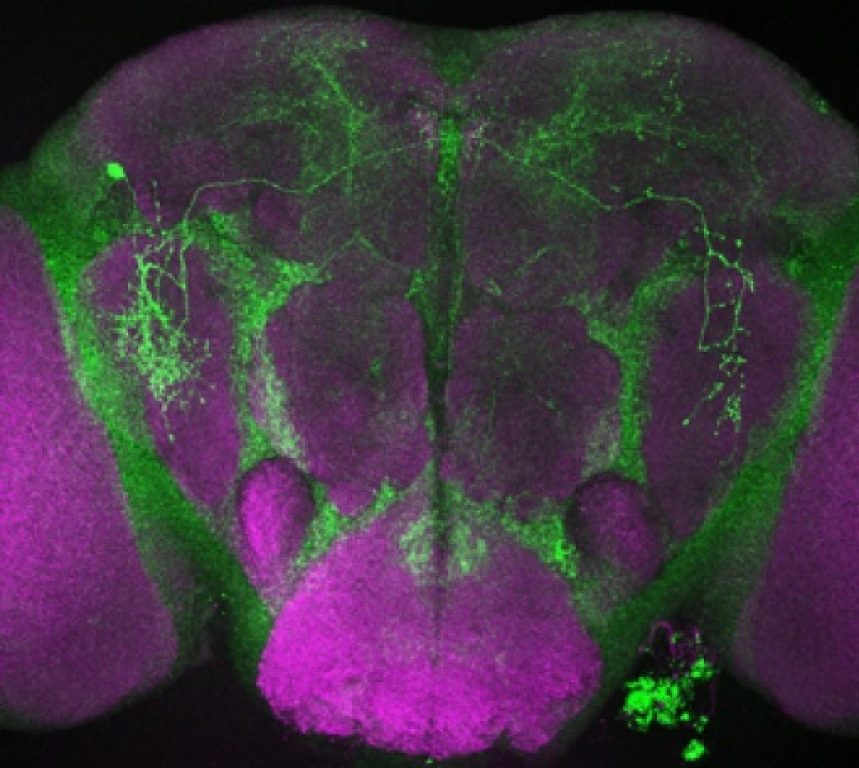
Source
University of Pennsylvania’s Perelman School of Medicine
Highlights
- Nemuri (nur), is required for deep sleep as well as for the induction of sleep after arousal, sleep deprivation, or infection
- It increases when sleep need is high
- Nemuri kill microbes, most likely in the periphery, and increases sleep through its action in the brain.

Nemuri - Sleep Inducer
Sleep is tightly regulated in every vertebrate species in which it has been carefully investigated, but what sleep is for remains a mystery. We spent our 1/3rd of life in sleeping. It affects our metabolism, life Span and Immunity. Sleep is also present in invertebrates, and an extensive analysis in Drosophila melanogaster has shown that sleep in fruit flies shows most of the fundamental features that characterize sleep in mammals. Because of the extensive similarities between flies and mammals Drosophila is now being used as a promising model system for the genetic dissection of sleep. Prolonged wakefulness promotes accumulation of sleep-promoting signals, some of which may be secreted.
Amita Sehgal group at the University of Pennsylvania’s Perelman School of Medicine, found a new molecule that induces sleep and also work as anti-microbial peptide and that work published in science. To identify genetic factors that promote sleep, they conducted an unbiased and genome-wide gain-of-function screen in Drosophila.
They screened 12,198 lines which correspond to 8015 Drosophila genes. Rescreens of candidate lines identified only one that showed a significant increase in sleep relative to controls. Upon induction with RU486 in such lines, the total amount of sleep in this line increased in both males and females and was reflected in increases in both daytime and nighttime sleep.
The line with the increased sleep phenotype contains uncharacterized Gene, which they named nemuri (nur; Japanese word for “sleep”). For higher-resolution analysis of sleep induced by nur, they evaluated sleep with a video tracking system. Video analysis confirmed that nur overexpression increased both daytime and nighttime sleep. They also showed that nur overexpression increases sleep depth and sleep length.
NUR - Antimicrobial Peptide
Next, authors characterized the nur and found that NUR has N-terminal signal peptide, short open reading frame, multiple arginine’s and glycine’s and no transmembrane region. They found that Nemuri is excreted from cells. They also showed that ectopic expression of gene also induces sleep. NUR contains a domain of cationic amino acids characteristic of several antimicrobial peptides and NUR has sequence similarity to an AMP, cathelicidin, isolated from fish. NUR was very effective in this assay, killing microbes (Serratia marcescens or Escherichia coli) at concentrations considered physiological for AMPs.
AMPs promote survival of organisms upon infection, mostly by killing microbes, but in some cases also by changes other aspects of the immune response. Because sleep also brings recovery from illness and even enhances survival of flies after bacterial infection.
They tested whether sleep induction by NUR contributes to host defense. They induced NUR expression in neurons and subjected the flies to bacterial infection. Flies overexpressing NUR survived significantly longer than controls. Upon sleep deprivation NUR mRNA levels increases. Researchers showed NUR present at the dorsal fan-shaped body (dFSB) in response to sleep deprivation.
The authors said and other reports also suggests that cytokines such as interleukin-1 (IL-1), an immune cell molecule, are implicated in human sleep. IL-1 can function in the same pathway as AMPs, and it accumulates after prolonged wakefulness and appears to promote sleep. In both flies and mammals, many classical neurotransmitters promote arousal acetylcholine, dopamine, histamine, norepinephrine/octopamine but only g-aminobutyric acid (GABA) is consistently associated with increases in sleep. In mammals, cytokines can induce production of AMPs, but AMPS may also affect the expression of cytokines.
The researchers conclude that NEMURI is a working link between immune function and sleep.
Journal Reference
Hirofumi Toda, Julie A. Williams, Michael Gulledge, Amita Sehgal. A sleep-inducing gene, nemuri, links sleep and immune function in Drosophila. Science, 2019 DOI:10.1126/science.aat1650
Videos
